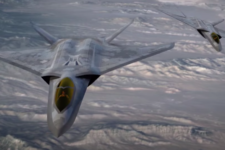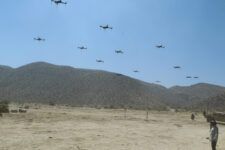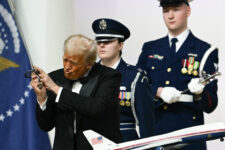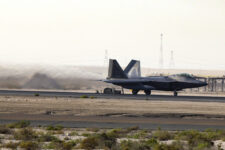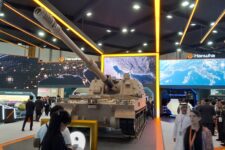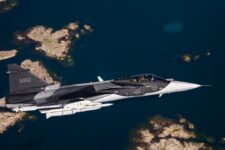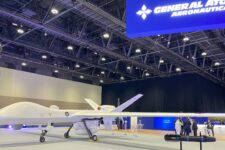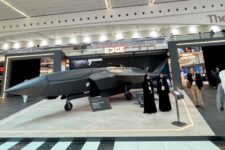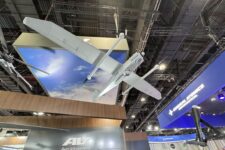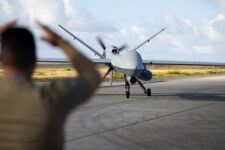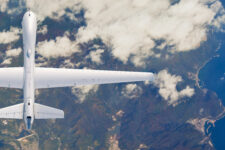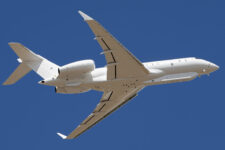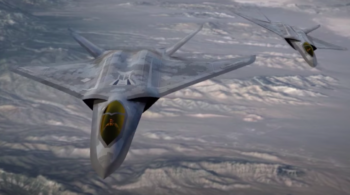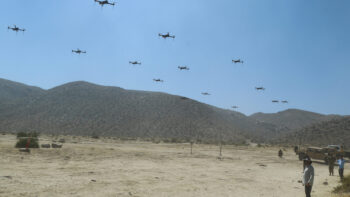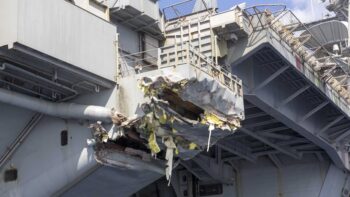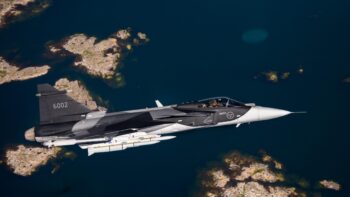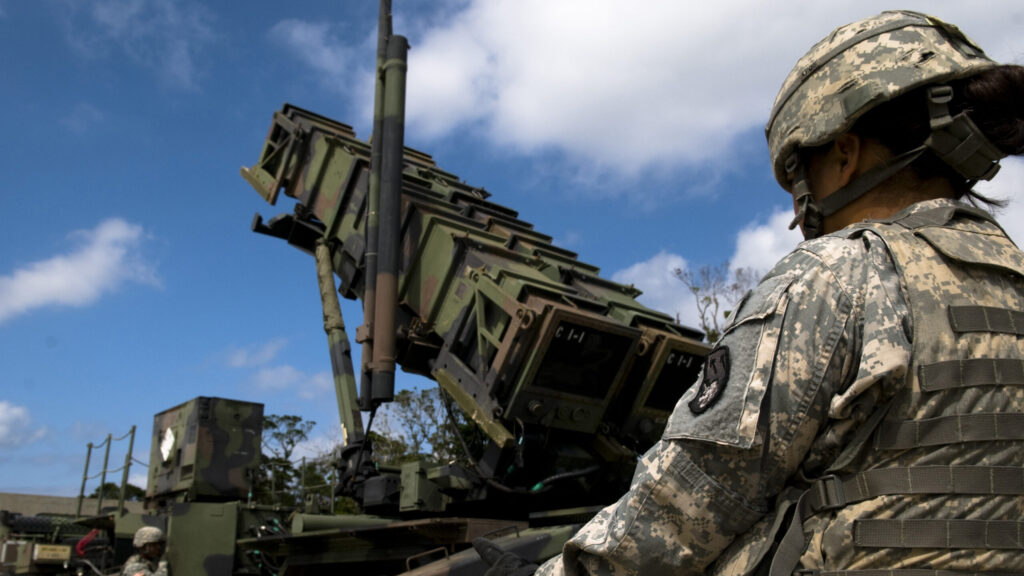
US Army Privates 1st Class Danica Sasakura and Dean Werner, 1-1 Air Defense Artillery, Charley Battery Patriot Missile operators, perform pre-launch checks on a Patriot missile launcher as part of a field training exercise on Kadena Air Base, Japan. Kadena hosts the largest combat wing in the Pacific. (U.S. Air Force Airman 1st Class Maeson Elleman)
SYDNEY — The US, its allies and partners must change their air forces to cope with China’s enormous missile force that could cripple air bases throughout the Indo-Pacific for up to 12 days in event of war, according to a new report by the Stimson Center.
“By denying the United States the use of runways and taxiways in the region, the People’s Liberation Army (PLA) could gain air superiority without ever defeating America’s arsenal of advanced fighters and bombers,” says the think tank report, released today. “No combination of U.S. countermeasures — including the greater dispersal of aircraft in the region, improved runway repair capabilities, and more robust missile defenses — is likely to solve the problem. There is a real and growing danger that Beijing might conclude that it could keep American airpower at bay long enough to accomplish a quick fait accompli.”
Central to the analysis is US vulnerability to attacks on runways in Japan, Guam, the Northern Mariana Islands, the Marshall Islands, the Federated States of Micronesia and Palau. And it modeled how well missile defense, faster runway repair times and the dispersion of U.S. aircraft across the theater would perform against the Chinese threat.
RELATED: Guam missile defenses conduct first-ever ballistic interception in test
The three authors say initial strikes by China that close air bases could cripple US and allied forces for 12 days, especially at the Japanese bases. But it would be the loss of runways for airborne tankers; that would affect operations “for over a month.”
Without refueling, US fighters with relatively short ranges “will not be able to put most of their weapons within range — much less fly a combat air patrol over Taiwan or the South China Sea.”
With the stark challenge laid out, coming up with solutions is “arguably the most critical and daunting task facing the U.S. Air Force today,” claims the report. “The Air Force finds itself in danger of operating much less effectively than previously assessed, if at all, at the start of a military conflict when the Joint Force would expect it to quickly set up a combat air patrol or sink Chinese ships in the Taiwan Strait. Worse, Chinese military planners might calculate that they have a window of over 30 days — when American airpower would be largely sidelined — to accomplish a fait accompli.”
That could make it very hard to deter Beijing should push come to shove.
Buying more missile defense systems or more fighters or bombers is not the answer for the US and its allies, the authors write. It should instead build “large numbers of long-range drones and missiles of all types to ensure that they can keep the skies contested and blunt Chinese attacks early in a war without massive support from American fighters and bombers.”
To illustrate just how spare the US missile defense enterprise is for all its impressive results in limited conflicts, they note that in October this year, two US Navy ships fired roughly one dozen SM-3 interceptors at Iranian ballistic missiles headed for Israel — using a year’s worth of production in one day. The Stimson study predicts that the US “would likely run out of Patriot and THAAD interceptors within the first 24 hours of a military conflict.” The inventory of 1,200 Patriot missiles would run dry within a few days. So positioning THAAD and Patriot batteries around US and allied bases won’t be of enough help for long enough.
They also recommend allies and partners should pick up “the bulk of the burden for contesting control of the air early in a war.”
For example, instead of allies buying what the report calls “prestige weapons systems” such as Japan’s upgraded F-16s and Tokyo’s plans to co-develop a sixth-generation fighter jet with Britain and Italy, which they argue “will be of limited utility early in a war,” they should spend more on defense and, specifically, expanding training in drone warfare.
In the end, the authors offer a grim reminder of the stakes. The United States, they write, “should be under no illusions: there will be no refuge or rest from the long reach of Chinese missiles for U.S. air bases in a war. U.S. decision-makers should ask themselves the hard questions: whether — and when — paying that high price in materiel and human lives will be in the United States’ national interest.”
